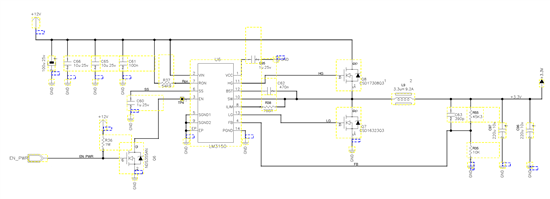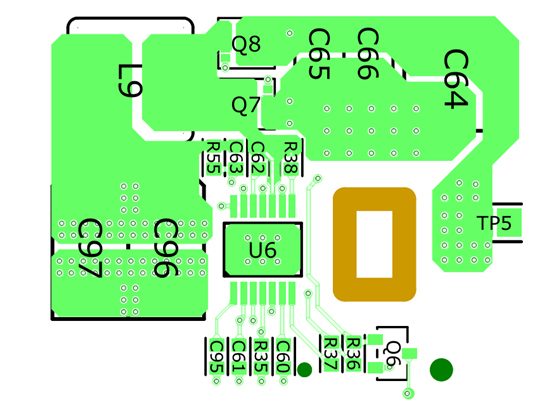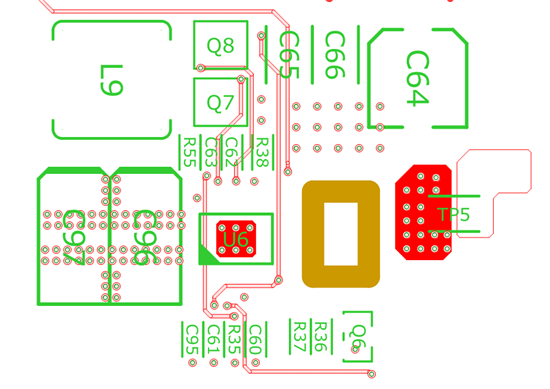Hi,
We have implemented a webbench design, based on LM3150.
It's a 12Vin, nominal, to 3.3Vout 8 A.
It powers a highly capacitive load (8x 680uF tantalum capacitors)
When I look at the voltage at pin SW, with almost no load (some logic plus the 680uF capactiors), we see a clean step waveform
But when we apply any load (by the moment a resitive load, plus 680uF capacitors), we can see some kind of oscillation, that we think it doesn’t be there
And zoomed
I use the webbench part numbers, excep for:
* Cin. I have two additional CAPs ( 100uF 25V electrolitic aluminium) before Cin.
* Css. I have changed Css to 1uF to slow down the ramp-up.
* Cout. I use two 680uF 6v3V in parallel befor plane conection (0.6 ESR each).
Is this oscillation undesirable?
any clue on what is causing this oscillation?
thanks
PD.- the webbench desing:







